In: Artists

Jane Evelyn Atwood | TOO MUCH TIME: WOMEN IN PRISON, 2000
November 25, 2022Jane Evelyn Atwood, TROP DE PEINES: FEMMES EN PRISON, 2000, Éditions Albin Michel, Paris, France. (OUT OF PRINT)
Jane Evelyn Atwood, TOO MUCH TIME: WOMEN IN PRISON, 2000, Phaidon Press Ltd., London, England. (OUT OF PRINT)
“Curiosity was the initial spur. Surprise, shock and bewilderment soon took over. Rage propelled me along to the end.”
Too many times – and I’m sure I’m not alone in this – I have heard some well meaning dilettante assert that ‘art should be about beauty’ or ‘should only uplift us.’ In terms of that space where photography intersects with ideas of art and documentary – and not to mention history – something that comforts you is most likely wrong, if not simply pablum. When I’m sharing images on social media, there are some photographers I hesitate to post works from (as photography still carries the weight of being more ‘real’, thus can ‘offend’ as well as see yourself banned from those platforms): Gilles Peress is one of those, for his unflinching lens in places from Rwanda to the former Yugoslavia (“I don’t trust words. I trust pictures”), Gordon W. Gahan (specifically his images of the Vietnam War), Donna Ferrato (I was lucky enough to experience her groundbreaking series Living with the Enemy decades ago, in Windsor) or Martha Rosler (her House Beautiful: Bringing the War Home works that had their genesis in response to the Vietnam War (c.1967–72) but that she ‘revisited’ in 2004 and 2008, ‘updating’ them to Iraq and Afghanistan).
But the text I’ve selected for a Library Pick is something that is not ‘there’ but ‘here’, and in that respect is often – easily, repeatedly – ignored.
Jane Evelyn Atwood’s “monumental work on female incarceration, published in both French and English, took Atwood to forty prisons in nine different countries in Europe, Eastern Europe, and the United States. The access she managed to obtain inside some of the world’s worst penitentiaries and jails, including death row, make this ten-year undertaking the definitive photographic work on women in prison to date. Extensive texts include interviews with inmates and prison staff as well as Atwood’s own reminiscences and observations. The prize-winning photos in this book, including the story of an incarcerated woman giving birth while handcuffed, established Jane Evelyn Atwood as one of today’s leading documentary photographers.” (from her site)
Atwood has always used her camera as a means to tell stories too often not even dismissed but denied, and she has granted a level of dignity and consideration to those whom are too often not considered human but detritus.
A good friend is a theologian, but of the liberation theology vein: I enjoy talking with them, as their righteous anger is only matched by their ability to quote that repeatedly translated and edited text with a sense of the public good. I mention them as they once pointed out that in the New Testament, only one person was promised a place in the ‘kingdom of heaven’, and that was one of the criminals being crucified at the same time as Jesus.
In a more modern sense, I might cite Lutheran Minister (and ‘public theologian’) Nadia Bolz-Weber‘s contemporary addendum to the beatitudes, which include ‘Blessed are those who have nothing to offer. Blessed are they for whom nothing seems to be working.’
Atwood published ten books of her work and been awarded the W. Eugene Smith Grant in Humanistic Photography, the Grand Prix Paris Match for Photojournalism, the Oskar Barnack Award, the Alfred Eisenstadt Award and the Hasselblad Foundation Grant twice.
More of Atwood’s work can be seen here.
Like several of the books I’ve recommended, this is one I came across in my local library.
~ Bart Gazzola
Read More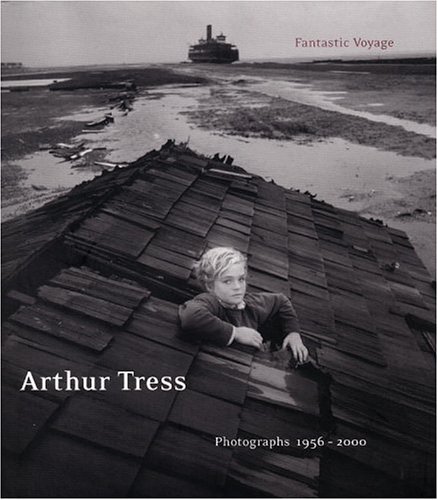
Arthur Tress: Fantastic Voyage, Photographs 1956-2000 | 2001
November 10, 2022Arthur Tress: Fantastic Voyage, Photographs 1956-2000
200 pages, Hardcover, Bulfinch, 2001.
Arthur Tress (Photographer), with writing by John Wood and Richard Lorenz
There was a recent exhibition of Tress’ photographs mounted at Stephen Bulger Gallery in Toronto, and that brought his work back to mind. Having enjoyed several of his books, I returned to this one – which is, for me the definitive publication of Tress’ art and aesthetic – and it’s definitely worthy of a Library Pick.
Tress’ works are striking, if unsettling. An initial amusement or facile reading gives way to a more conflicting or uncanny narrative upon closer consideration. He shares this with photographers like Ralph Eugene Meatyard, Mary Ellen Mark, Diane Arbus and – an artist featured in a previous Library Pick – Roger Ballen.
“Tress started out as an ethnographic documentarian but, partly inspired by the rituals he recorded, turned to ever more premeditated subjects. In an early project, he asked New York children to tell him their dreams and then posed them, with appropriate trappings, in neighborhood spaces to illustrate their sleeping fancies. His projects since the mid-1980s involve arrangements of tools, toys, furniture, dolls, and other stuff that Tress paints and lights to suggest scenarios and even narratives. Besides the short-term projects, Tress has made surrealist outdoor still lifes and male nudes over longer periods. The latter, including some of his best-known pictures, are implicitly homoerotic but considerably more apprehensive and even dread-filled than the nudes of fellow gay surrealist Duane Michals. But there is more humor and less darkness in Tress’ highly polished work…” (from Tress’ site, which is worth spending some time exploring, as well)
“Arthur Tress’s career can be seen as a long fantastic voyage – from early photojournalism into the realm of surrealism, eroticism and miniature worlds. This retrospective is an overview of Tress’s career. As the title implies, Tress’s work is full of fantasy – nothing is what it at first seems. His images contain dark undercurrents and light wit, violence and beauty, futuristic scenes and homoerotic and psychologically charged tableaux. The 250 images featured in this volume range from the early black-and-white work to the richly coloured surrealistic images of the 1990s and his latest, previously unpublished work in progress. Richard Lorenz, (curator of a retrospective exhibition in Washington, DC, in May 2001) offers an in-depth biographical essay on Tress and the development of his vision. An essay by noted photo critic John August Wood puts Tress in context.” (from here)
The images I’ve shared here are from the bodies of work by Tress that are my favourites – primarily Dream Collector (1970 – 74), Theater of the Mind (1976 – 77) and Still Life (1981 – 83): but there’s other series in this book that are very different, and a testimony to the breadth of his aesthetic and career. These include the starkness of his documentary work in Appalachia (1969) to the uncanny quality of his Fishtank ‘installations’ (1989) to the moribund garishness of Hospital (1985 – 87).
From the Corcoran’s review of this publication: “Tress’s work, above all else, reveals a personal approach to photography, a subjective view of the world that continually reinvents itself while it ponders universal archetypes and myths.”
Arthur Tress was a previously featured artist in AIH Studios’ ongoing Artists You Need To Know series: that can be enjoyed here.
~ Bart Gazzola
Read More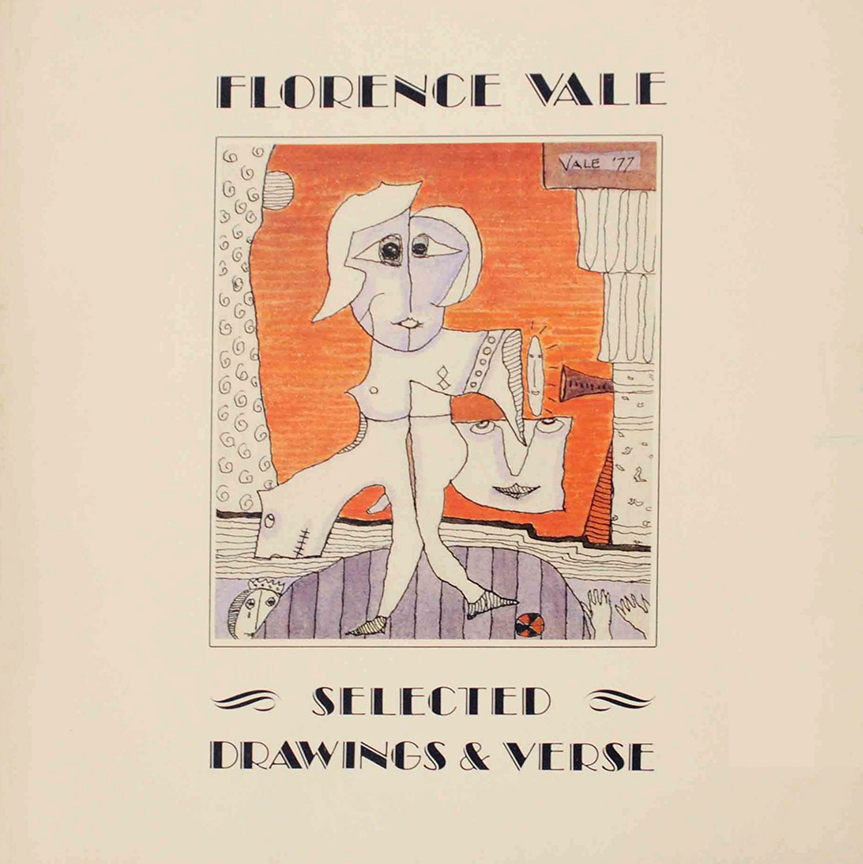
Florence Vale | Selected Drawings & Verse, 1979
November 3, 2022Florence Vale | Selected Drawings & Verse, 1979
Published by Aya Press, Toronto, Ontario, Canada, 1979
My love created
something more real than you are
how disappointing
Florence Vale was an artist influenced equally by surrealism, expressionism and cubism, melding these sometimes disparate movements into unique works. “I paint what I dream,” Florence Vale (1909 – 2003) stated, and the late art historian Natalie Luckyj offered that “Her art was a world in which fantasy and reality are interwoven to create a private and secret environment.”
She published several books of her writing intermixed with her artwork: in this slim volume, the drawings are linear and simple, and often erotic. The text alternates between a light-hearted salaciousness and more stark, desolate meditations upon love.
Vale was a previously featured artist in AIH Studios’ ongoing series of Artists You Need To Know. That can be enjoyed here, where you can see more of her artwork.
A light went out
and I can’t turn it on
the dark is frightening
engulfing
temptation is rife
a momentary relief
leaving regrets
and the pain is there still
but deeper now
despair strains the heart
longing is agony
God’s love cannot compensate for yours
This is not an easy book to find, though you may be able to procure it online through spaces like this one. But – as I so often do – I would suggest your local library, or a local second hand book store, as they have been – and continue to be – treasure troves of fine art books. I discovered this book in the library at AIH Studios, but also have a copy of another of Vale’s publications of prose and pictures that I bought at an artist run centre’s ‘yard sale.’
I must also inject that there are too few collections of artists’ books and publications that are accessible to all, in gallery and museum spaces, and this is an unfortunate consequence of the prevalence of digital spheres, now….
~ Bart Gazzola
Read More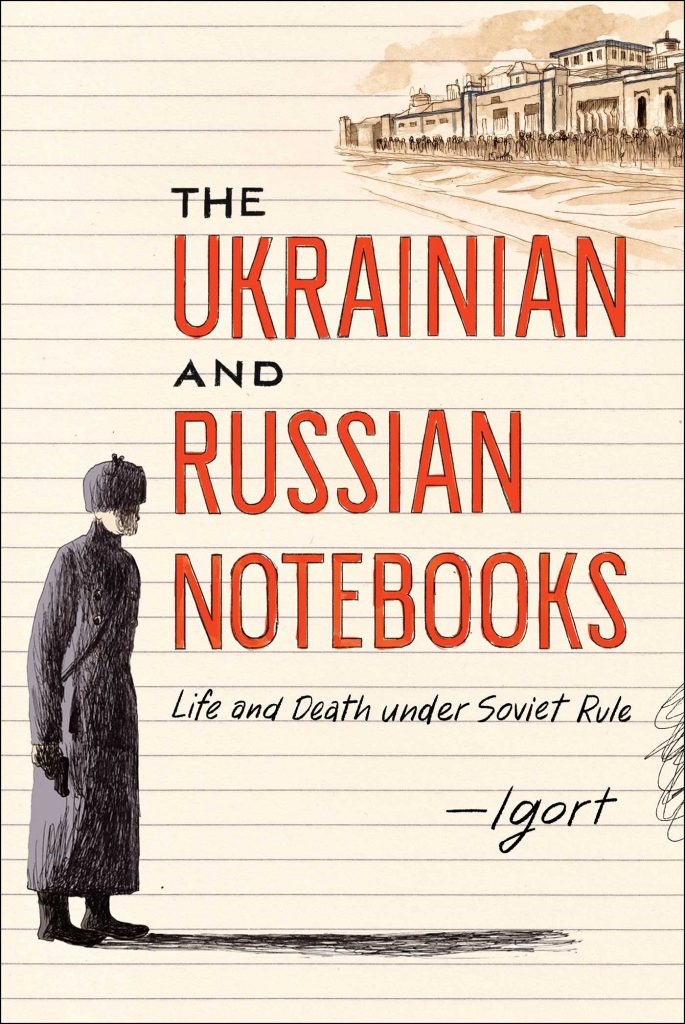
The Ukrainian and Russian Notebooks: Life and Death Under Soviet Rule | Igort, 2016
September 1, 2022The Ukrainian and Russian Notebooks: Life and Death Under Soviet Rule | Igort, 2016
All has been looted, betrayed, sold; black death’s wing flashed ahead.
(Anna Akhmatova)
Of late, I’ve been exploring more graphic novels in my reading (this was partly inspired by Virgil Hammock’s feature on Jon Claytor’s Take The Long Way Home). I cut my artistic teeth on comics, as a teenager, and it’s been good to see them garnering the respect they merit in North American cultural discourse.
Sometimes I’ll pick things up at random. That’s how I encountered Putain de Guerre! (Goddamn This War!), by Jacques Tardi and Jean-Pierre Verney, translated into English by Helge Dascher. That graphic novel came to mind as I was reading – also having picked it up on a whim – The Ukrainian and Russian Notebooks: Life and Death Under Soviet Rule, by Cuadernos de Igort (who creates his work under the name Igort) with Jamie Richards as translator.
Both are horrific. Putain de Guerre! is perhaps less shockingly immediately visceral, as we can pretend it’s more remote, more ‘done’ and ‘in the past.’ But Igort’s Notebooks have a contemporary resonance, with what’s happening in the Ukraine right now. It scalds, in an immediate manner, and you’ll carry the personal stories of the people in it with you, long after you’ve put it down. It horrifies, and the personal narratives splash onto, and into, you, if you even have the barest sense of empathy. In this sense, it’s like Timothy Snyder’s Bloodlands: Europe Between Hitler and Stalin, where myself – and everyone I know who’s read it – found they had to repeatedly check the endnotes, as the sheer numbers of slaughter and death seemed unreal. A friend from Poland told me she could only read it in parts, as it was simply too much.
The Ukrainian and Russian Notebooks: Life and Death Under Soviet Rule are equally harrowing, as brilliant in a minimalist artistic execution as they are grotesquely overwhelming in the tales being related.
“After spending two years in Ukraine and Russia, collecting the stories of the survivors and witnesses to Soviet rule, masterful Italian graphic novelist Igort was compelled to illuminate two shadowy moments in recent history: the Ukraine famine and the assassination of a Russian journalist. Now he brings those stories to new life with in-depth reporting and deep compassion.
In The Russian Notebooks, Igort investigates the murder of award-winning journalist and human rights activist Anna Politkoyskaya. Anna spoke out frequently against the Second Chechen War, criticizing Vladimir Putin. For her work, she was detained, poisoned, and ultimately murdered. Igort follows in her tracks, detailing Anna’s assassination and the stories of abuse, murder, abduction, and torture that Russia was so desperate to censor. In The Ukrainian Notebooks, Igort reaches further back in history and illustrates the events of the 1932 Holodomor. Little known outside of the Ukraine, the Holodomor was a government-sanctioned famine, a peacetime atrocity during Stalin’s rule that killed anywhere from 1.8 to twelve million ethnic Ukrainians. Told through interviews with the people who lived through it, Igort paints a harrowing picture of hunger and cruelty under Soviet rule.”
“With elegant brush strokes and a stark color palette, Igort has transcribed the words and emotions of his subjects, revealing their intelligence, humanity, and honesty—and exposing the secret world of the former USSR.” (This quote, and the previous one, are from here).
If – after all that – you’re still interested to seek out a copy of Igort’s recording of the stories of Serafima Andreyevana, Nikolay Vasilievich, Maria Ivanovna and so many others, I suggest visiting the artist’s site, though my local library has an impressive collection of graphic novels and their ilk, and that’s a fine place to begin, as well.
~ Bart Gazzola
Read More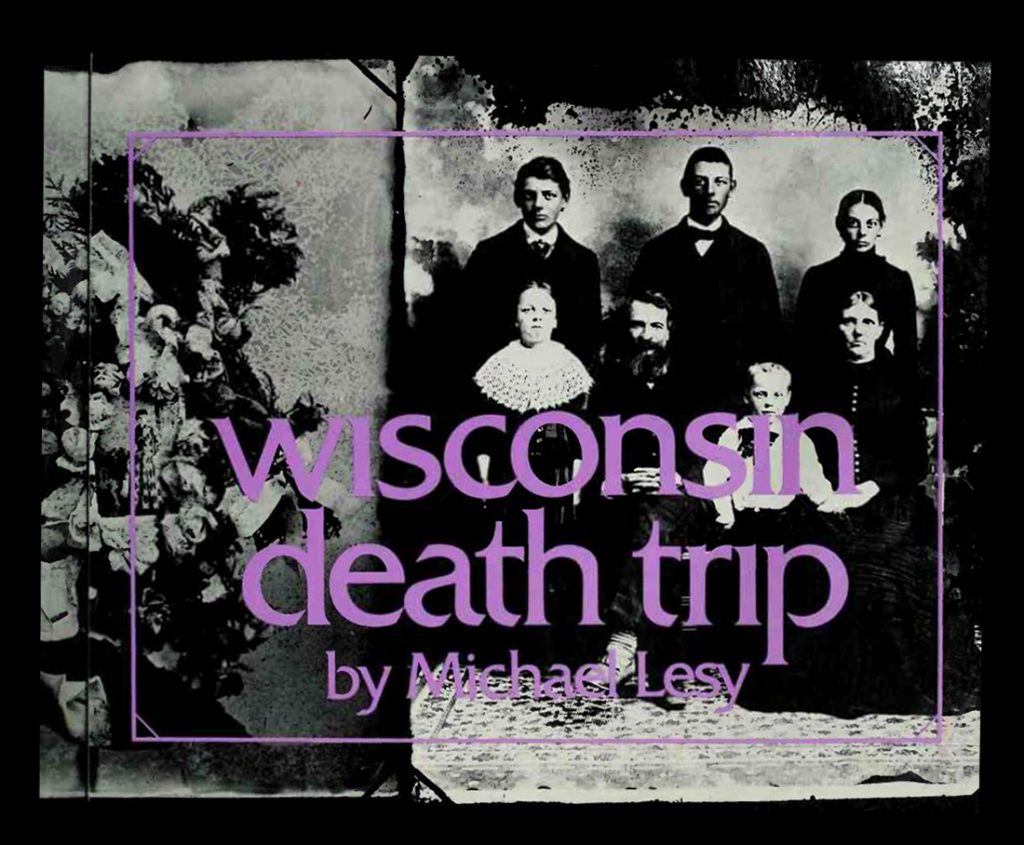
Wisconsin Death Trip | Michael Lesy, 1973
August 11, 2022Wisconsin Death Trip | Michael Lesy, 1973 (reprinted in 1991 by Anchor Books, and University of New Mexico Press in 2000)
Pause now. Draw back from it. There will be time again to experience and remember. For a minute, wait, and then set your mind to consider a different set of circumstances: consider those scholars and social philosophers who never knew that Anna Myinek had burned her employer’s barn or that Ada Arlington had shot her lover, but who nevertheless understood that something strange and extraordinary was happening in the middle of the continent at nearly the same instant that they sat in their studies, surrounded by their books. Such men did their best to understand what it meant, and in the process they tried to predict that future in which we are now enmeshed.
The only problem is how to change a portrait back into a person and how to change a sentence back into an event….The thing to worry about is meanings, not appearances.
I first became aware of Wisconsin Death Trip – the book by Michael Lesy and the James Marsh film it inspired, which I’m less impressed with – while reading Stephen King’s novella 1922, as King has mentioned it as inspiration. It’s one of those King stories that could be interpreted as flirting with the supernatural, but may, in fact, simply be everyday horror. 1922 tells the tale of an ignorant, greedy man on a failing, hardscrabble farm, who murders his wife and thus brings about the death of his beloved son (the ‘ghost’ of his wife returns, Banquo – like, to tell of this before his child’s body is even found). He survives only to suffer and regret, losing all he owned – and his hand, to infection – and is haunted, for years, by the rats that consumed his murdered wife’s body, that only he can hear, and suffers their chittering call and bites in the long dark nights until he takes his own life to escape….
Read more of Gazzola’s thoughts about Wisconsin Death Trip here.
Read More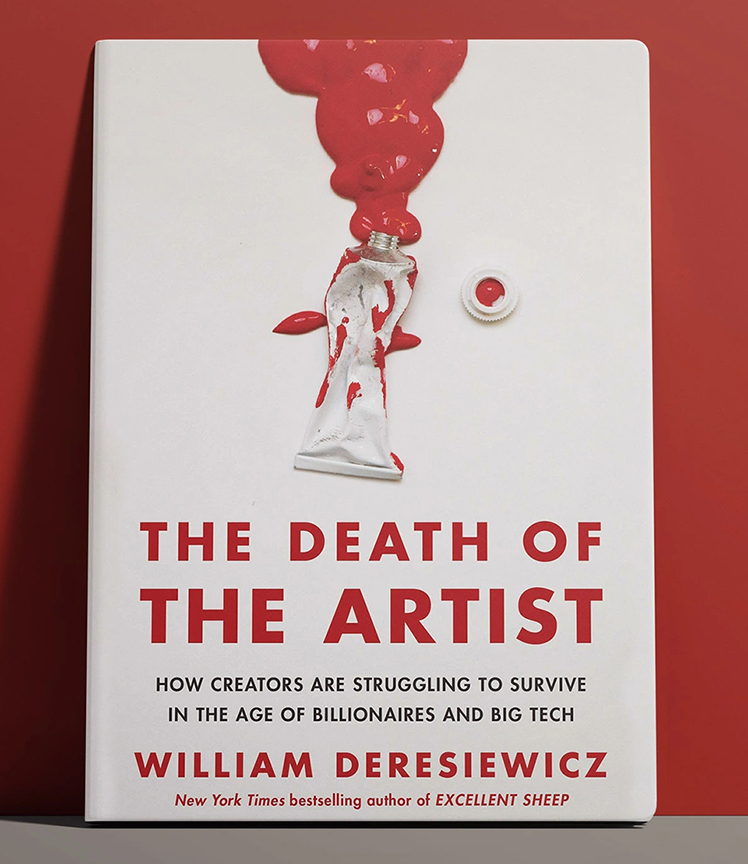
The Death of the Artist | William Deresiewicz, 2020
June 3, 2022The Death of the Artist: How Creators Are Struggling to Survive in the Age of Billionaires and Big Tech | William Deresiewicz, 2020
I cannot think of another field in which people feel guilty about being paid for their work—and even guiltier for wanting to be.
This is – bluntly – a difficult book. It was necessary for me to read it in installments, and I know that many of my friends who are artists had to do the same. Perhaps it was like a series of inoculations against a disease, spaced out to have maximum curative effect. It motivated me to revisit Robert Hughes’ essay Art and Money, from his book Nothing If Not Critical, and simultaneously I was reading Blockchain and the Law: The Rule of Code by Primavera De Filippi and Aaron Wright (as part of my ongoing attempt to understand the phenomenon of NFTs better). Three decades separate those two books, and they make an interesting extended bibliography to The Death of the Artist. Sometimes there’s concurrences, more often disagreement, and a feeling that more time must have passed between their publication, as the gulf is so wide that Doris Lessing’s idea that ‘nothing seems more improbable than what people believed when this belief has gone with the wind’ floated in the air, as I read.
For anyone who’s worked in culture, or has attended art school or various other educational institutions focused upon producing ‘creators’, there are numerous assertions made in William Deresiewicz’ book that will ring true, in a rueful manner that many of us may have denied (or sadly, will continue to do so, unto the pauper’s grave). Some of the stories from the artists – of various stripes – that Deresiewicz spoke with, that inform this book, will be very familiar. My own experience in public galleries or artist run centres, and attempting to negotiate being a cultural worker in other spheres, match the stories here.
This book might offend you, but it will offend you in all the correct ways, and perhaps offend all the appropriate people.
If art is work, then artists are workers. No one likes to hear this. Nonartists don’t, because it shatters their romantic ideas about the creative life. Artists don’t either, as people who have tried to organize them as workers have told me. They also buy into the myths; they also want to think they’re special. To be a worker is to be like everybody else. Yet to accept that art is work—in the specific sense that it deserves remuneration—can be a crucial act of self-empowerment, as well as self-definition.
A tangent, not unrelated, if I may, that aligns with Deresiewicz’ research: a friend is an artist, exhibiting widely, and has been teaching as a sessional for several years. She is me, twenty years ago: she has less protection, security and opportunity than I did, despite both of us doing ‘all the right things.’ We are – like many workers – in a steady decline, that seems not only unstoppable, but unrecognized. Another gem from Deresiewicz’ book: The writer and visual artist Molly Crabapple, another exemplary leftist, puts it like this in her essay “Filthy Lucre”: “Not talking about money is a tool of class war.”
Art is hard. It never just comes to you. The idea of effortless inspiration is another romantic myth. For amateurs, making art may be a form of recreation, but no one, amateur or professional, who has tried to do it with any degree of seriousness is under the illusion that it’s easy. “A writer,” said Thomas Mann, “is someone for whom writing is more difficult than it is for other people.” More difficult, because there is more for you to do, more that you know how to do, and because you hold yourself to higher standards.
If I ever dared to revisit academic or educational spaces – or if I was let back in – this text would be required reading, not just for those wanting to become artists, but especially for those who would go on to be gallerists, cultural workers and even players within the political sphere, as in some ways this book is a warning. But there’s a large dollop of Cassandra in cultural spaces, especially in Canada (several years ago, I was pilloried for shaming an artist run centre for not paying emerging artists, but the abuse was worth it as they – eventually – did the right thing). Deresiewicz’ research, and the testimonials in this book, can help break that complacency….
The Death of the Artist: How Creators Are Struggling to Survive in the Age of Billionaires and Big Tech is not so much a warning, as a reality. It is a severe, but indispensable, book.
All quotes in italics are from Deresiewicz’ book. As usual, I suggest visiting a local bookstore (such as Someday Books) to pick up this text.
~ Bart Gazzola
Read More
Recent Comments